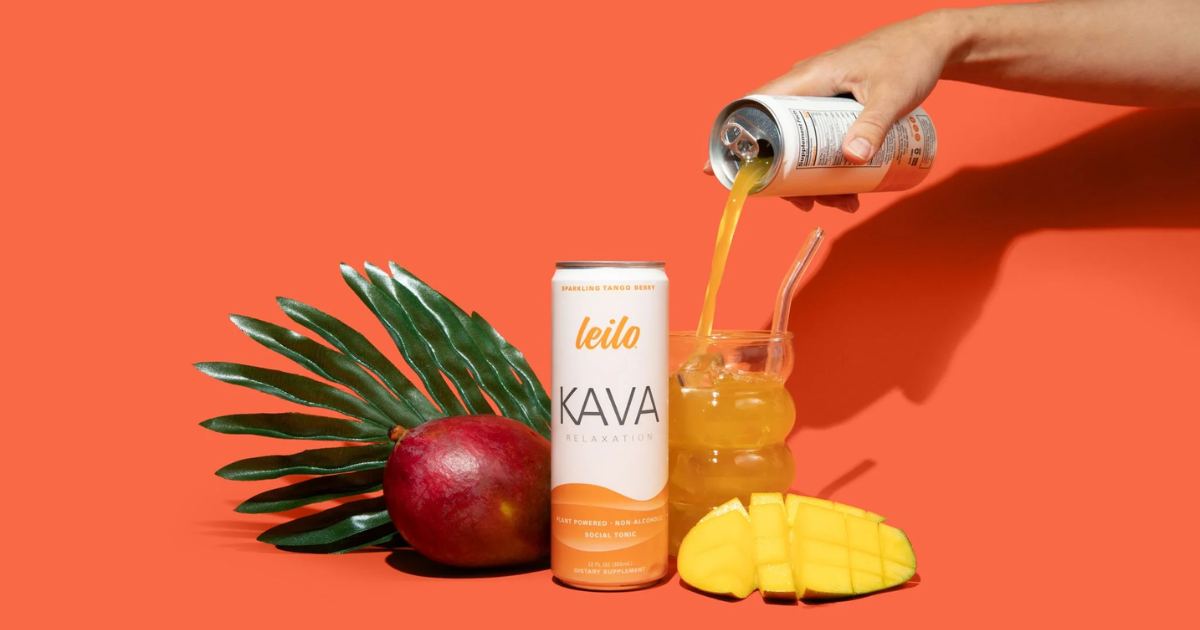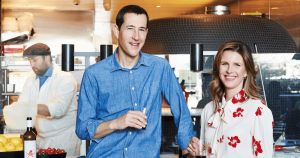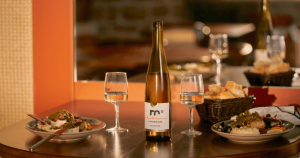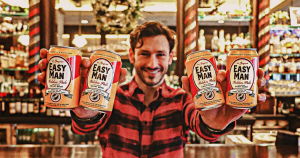By Marina Castillo, Founder of The Modern Mocktail
Have you ever been to a kava bar or participated in a traditional kava ceremony? If not, you probably haven’t seen kava in the light it deserves—the light that shows how this remarkable plant can truly benefit people.
Picture this: you walk into a kava bar, and the atmosphere is relaxed and inviting. People are lounging on comfortable couches, sipping from coconut shells or wooden bowls. Soft, melodic music fills the air, and there’s a genuine sense of community and tranquility. No alcohol allowed on premises. This is the essence of kava culture—a tradition going back thousands of years in the Pacific Islands.
Kava, made from the root of the Piper methysticum plant, is celebrated for its calming and socializing effects. Historically consumed in ceremonial contexts, kava has transitioned into mainstream culture, particularly in the United States. Consuming kava with an understanding of its cultural significance and proper habits enhances the experience and respects its rich heritage.
The Rise of Kava
Kava has long been valued for its ability to bring people together and promote peace. As it transitions into mainstream culture, several key factors are driving its popularity:
- Increased Awareness of Non-Alcoholic Options: More people are seeking alternatives to alcohol, and kava has emerged as a star player due to its relaxing properties without the hangover when consumed properly. This trend is evident in the major rise of kava bars across major cities.
- Health and Wellness Trends: The wellness movement has brought a focus on natural and holistic health solutions. Kava’s benefits align perfectly with these trends.
- Cultural Exchange and Education: Efforts to educate consumers about kava’s cultural significance and proper use have been pivotal in its adoption. Organizations and businesses within the industry, including The Modern Mocktail, have promoted responsible kava consumption and appreciation of its heritage.
Current Market Dynamics
The kava beverage market is characterized by a diverse range of products and consumption methods. From traditional kava brews to modern kava-infused beverages, the category is expanding rapidly. Notable trends include:
- Innovative Product Offerings: Companies are exploring new ways to incorporate kava into various products, such as kava-infused sodas, teas, and ready-to-drink (RTD) formats.
- Expansion of Kava Bars: The kava bar scene may have started in the US in 2002, but right now it’s booming with new establishments popping up in urban areas and smaller towns alike. These bars serve as vibrant community hubs where people can learn about and experience kava culture firsthand. This is a service The Modern Mocktail specializes in with our signature “Bula Boss” program, currently and actively helping businesses in 33 different states and 5 different countries.
- Regulatory Considerations: As kava gains popularity, it faces scrutiny and regulatory challenges, particularly concerning quality control and safety. Ensuring that kava products are sourced ethically and processed safely is crucial for the industry’s sustainable growth. This is ongoing work for The Modern Mocktail; we are always in conversation with business owners and local government officials to bridge the gap of understanding.
The Future of Kava
Looking ahead, the kava beverage category is poised for continued growth, but several opportunities and challenges must be navigated to ensure its success:
- Mainstream Acceptance: For kava to achieve mainstream acceptance, ongoing education and marketing efforts are essential. Highlighting kava’s benefits and differentiating it from other non alcoholic beverages will attract a wider audience.
- Sustainability and Ethical Sourcing: The sustainability of kava cultivation is critical. Supporting sustainable farming practices and ensuring fair compensation for Pacific Island farmers is vital.
- Innovation and Adaptation: The kava industry must continue to innovate by developing new product formats, exploring exciting flavor combinations, and leveraging advancements in food technology.
- Navigating Regulatory Landscapes: Addressing regulatory challenges proactively is crucial. Industry stakeholders should work collaboratively to establish clear guidelines and standards for kava products. Those who have a stake in the kava industry may face fringe industry risks similar to those of cannabis, but navigating these complexities is well worth it.
Important Precautions When Doing Business with Kava
While kava has many benefits, it’s important to consume it responsibly and understand certain precautions:
- Never Mix Kava and Alcohol: Combining kava with alcohol can be harmful. DO NOT MIX! Both substances are processed by the liver, and mixing them can lead to adverse effects.
- Stay Hydrated While Consuming Kava: Kava can be dehydrating, so it’s essential to drink plenty of water while enjoying it.
- Beware of Misleading Studies: The often-cited study claiming “kava is bad for the liver” has been debunked. It’s important to note that kava leaves, which are toxic, were used in that study. Proper consumption involves only the roots. In January 2024, the Hawaii State Department of Health (DOH) issued a memorandum that determined that the noble variety of kava root is GRAS (generally regarded as safe) if it is extracted with water or coconut water, as it was commonly used in food before January 1, 1958. If you have liver issues, always consult your doctor before trying anything new. Common sense and proper sourcing are key.
I’ve served thousands of people kava in my lifetime and always advocated for consuming the minimum effective serving size. I encourage people to seek knowledge independently, as relying on a single source can be misleading. The horror stories you hear about kava on the internet are often exaggerated or based on misinformation. What people fear most is the unknown—so I highly recommend visiting your nearest kava bar, talking to the kavatender, and learning more for yourself.
Final Thoughts
The kava beverage category is at an exciting juncture, with significant growth and opportunities on the horizon. As consumers increasingly seek out non-alcoholic alternatives that support their wellness goals, kava stands out as a unique and culturally rich option. By focusing on education, sustainability, innovation, and collaboration, the kava industry can build a bright and sustainable future. At The Modern Mocktail, we are committed to supporting this journey and helping businesses navigate the evolving landscape of kava and non-alcoholic beverages.
About the Author
Marina Castillo is Co-Founder of The Modern Mocktail – a consultation, design, and education company for businesses within the kava & non-alc industries. As a 13-year service industry expert, a mathematician, a former Las Vegas performer & event producer, a former kava bar Chief Operations Officer, and sober entrepreneur, Marina is the go-to non-alc menu & business design specialist. Learn more about The Modern Mocktail and Marina’s Bula Boss program.






